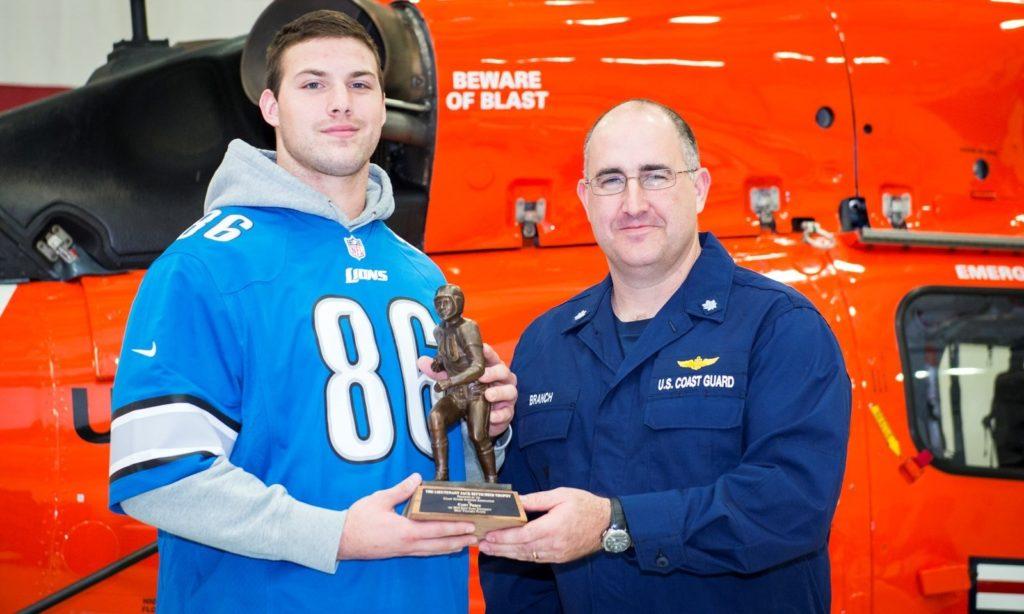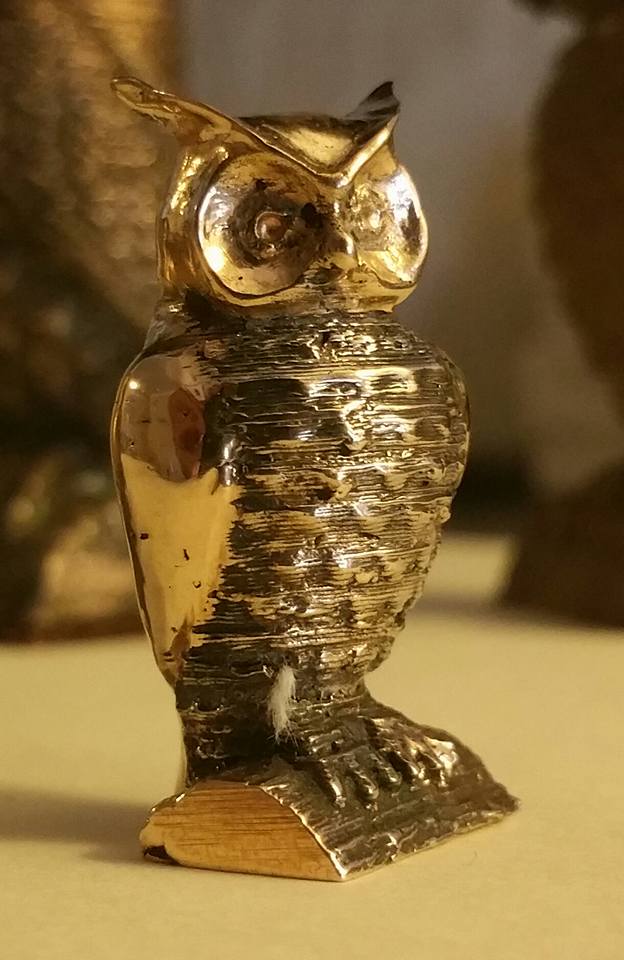This Year’s Kent State University MVP Will Be Presented with a Bronze Trophy 3D Printed with Filamet
As a football player, Rittichier is best known for an incredible 90-yard touchdown run in the final minutes of KSU’s homecoming game against Bowling Green State University on October 30, 1954. The touchdown won the game and sent the KSU football team to their first bowl game, the 1954 Refrigerator Bowl. Decades later, a photograph of Rittichier’s touchdown run was given to Rhode Island-based artist Ann Rozhon, who used it to create a bronze sculpture entitled “Jack’s Run.”
In 2014, the sculpture was 3D scanned at the Coast Guard Academy and the file was transmitted to the Paul King Foundry, where it was 3D printed and used to cast a miniature bronze version, which became the new trophy to be given to the KSU football team’s MVP. This year, though, the MVP will be given a different kind of trophy – one that has been fully 3D printed.

2014 KSU MVP Casey Pierce is presented with the Rittichier Award by Coast Guard Commander Marshall Branch. [Image: Petty Officer 3rd Class Christopher M. Yaw, US Coast Guard]
Filamet’s release caused quite a stir as it’s the closest we’ve gotten so far to an entirely metal filament for desktop 3D printing. Made from 88% metal powder and 12% plastic, the metal content of printed objects can be upped to nearly 100% by baking them in a kiln and allowing the plastic to burn away. Unlike the original Motorsport trophies, which were printed with expensive SLS technology and later painted or lacquered in gold, silver or bronze, the Rittichier Trophy will be printed with a standard FDM desktop 3D printer and polished to allow the natural bronze to shine.
Since Filamet’s release, it has been snapped up by high-profile consumers from Calvin Klein to the US Department of Energy. Now the Virtual Foundry is looking to focus on introducing the material to home users and makers, reflecting the young company’s maker origins. According to founder Bradley Woods, even the company’s production equipment was maker-built.
“It’s all controlled by a variety of Arduino’s and PICs,” said Woods. “By now we’ve replaced some of our equipment with industrial grade gear, but at one point all of our process equipment was home-built.”
In my opinion, a college football trophy is a pretty good way to showcase a material to the general public – particularly a trophy that honors a hero of both sports and war. Discuss further in the 3D Printed Trophy forum over at 3DPB.com.
Subscribe to Our Email Newsletter
Stay up-to-date on all the latest news from the 3D printing industry and receive information and offers from third party vendors.
Print Services
Upload your 3D Models and get them printed quickly and efficiently.
You May Also Like
Making Space: Stratasys Global Director of Aerospace & Defense Conrad Smith Discusses the Space Supply Chain Council
Of all the many verticals that have been significant additive manufacturing (AM) adopters, few have been more deeply influenced by the incorporation of AM into their workflows than the space...
EOS in India: AM’s Rising Star
EOS is doubling down on India. With a growing base of aerospace startups, new government policies, and a massive engineering workforce, India is quickly becoming one of the most important...
PostProcess CEO on Why the “Dirty Little Secret” of 3D Printing Can’t Be Ignored Anymore
If you’ve ever peeked behind the scenes of a 3D printing lab, you might have caught a glimpse of the post-processing room; maybe it’s messy, maybe hidden behind a mysterious...
Stratasys & Automation Intelligence Open North American Tooling Center in Flint
Stratasys has opened the North American Stratasys Tooling Center (NASTC) in Flint, Michigan, together with automation integrator and software firm Automation Intelligence. Stratasys wants the new center to help reduce...




































